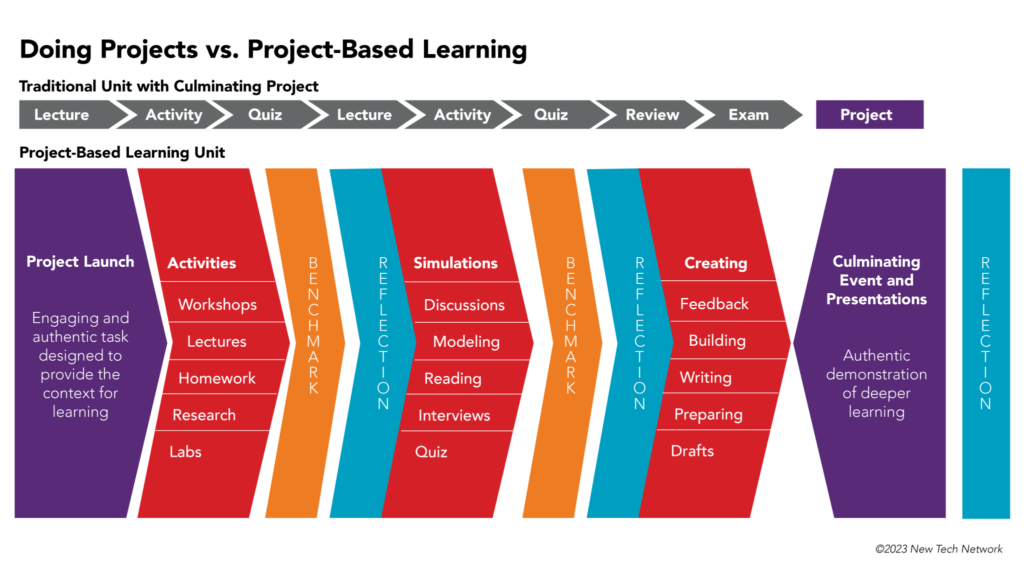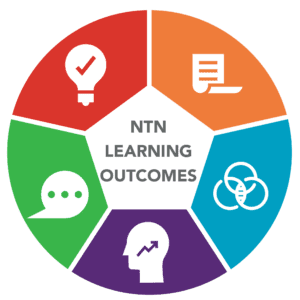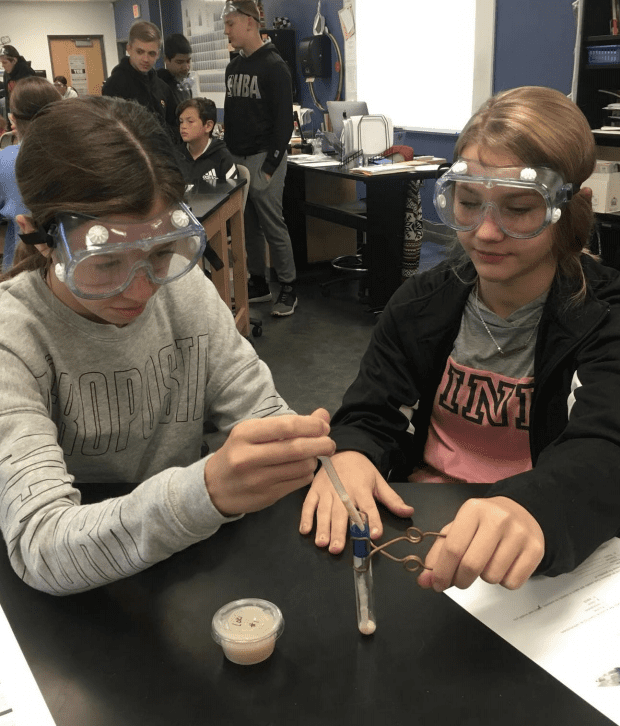Our Network
Resources and Tools
Benefits of Project-Based Learning
In today’s evolving educational landscape, educators are seeking innovative and effective teaching approaches that can equip students with the skills and knowledge to prepare them for college and career.
Project-based learning (PBL) is a hands-on, student-centered approach that immerses learners in projects that provide opportunities for students to apply their knowledge. Project-based learning creates a classroom that fosters deeper learning and 21st-century skills like collaboration, communication, and critical thinking. In this article, we will explore the foundations, benefits, and potential of a project-based curriculum that caters to the diverse needs of educators, learners, and stakeholders.
At its core, the project-based approach involves students engaging in authentic projects that address complex problems. This approach departs from traditional teacher-led instruction by placing students in the driver’s seat and giving students the chance to explore their passions and interests while developing essential skills. This aspect of PBL develops a lifelong love of learning that serves students far beyond the classroom. These projects often involve in-depth research, interpersonal and intrapersonal communication, and collaboration as students work towards the creation of a tangible product or oral presentation that showcases their learning journey.
For a more in-depth article on the principles and practices of project-based learning, refer to The Comprehensive Guide to Project-Based Learning: Empowering Student Choice through an Effective Teaching Method.
Doing Projects vs. Project-Based Learning
Project-based learning is often confused with “doing projects” in traditional classrooms. “Doing projects” generally means that a classroom often mirrors the traditional flow of direct instruction, activities, and quizzes that lead up to a content-specific test, with a project existing as a culminating “dessert” event of a traditionally taught unit. In Project-based learning, students aren’t just assessed on their understanding of academic content but on their ability to successfully apply that content when solving authentic, complex problems.

Project Launch

Project-based learning begins with a compelling question or problem that ensures authentic learning and sparks students’ curiosity. A project launch uses a real-world problem that encourages students to connect academic content to meaningful contexts.
Scaffolding and Benchmarks
Facilitators ensure students learn content knowledge and skills through ‘scaffolding’, which is defined as temporary support for students to build the skills and knowledge needed to create the final product. Benchmarks are designed to build on each other to support project teams toward the culminating product at the end of the project. Project-based learning is characterized by learner-centered, inquiry-based, experiential learning, in which students are encouraged to think and participate in their own learning.
Feedback and Reflection
Regular feedback and reflection on their work, allows students to refine their understanding and skills over time and help cultivate a supportive and inclusive learning environment.
Why Project-Based Learning is Effective
By integrating project-based learning into the classroom, educators can unlock many benefits for students. The research evidence overwhelmingly supports the positive impact of PBL on students, teachers, and school communities. Research on the efficacy of project-based learning in various learning environments continues to grow and build on a strong foundation.
Recent studies by Lucas Education Research (see Deutscher et al, 2021; Duke et al, 2020; Krajick et al, 2022; Harris et al, 2015) document that students in PBL classrooms not only outperform non-PBL classrooms academically, such as on state tests and AP exams, but also the benefits of PBL extend beyond academic achievement, as students develop essential skills, including creativity, collaboration, communication, and higher order thinking. Additional studies documenting the impact of PBL on K-12 learning are available in the PBL research annotated bibliography on the New Tech Network website.
These studies and sources demonstrate the positive impact of PBL on various aspects of learning, including content knowledge, problem-solving skills, motivation, and engagement. They contribute to the growing body of research supporting the effectiveness of PBL in enhancing student learning outcomes. Research studying the impact of NTN PBL on engagement found (Muller et al, 2020)
middle school students reported more frequent engagement in authentic learning activities
middle school students were more likely to report a more rigorous learning environment
middle school teachers and school administrators report that the PBL instructional approach allows for creativity in problem-solving and deeper questioning
Project-based learning lessons as an instructional strategy in STEM schools can be an effective way to deliver high quality STEM learning. Numerous studies focus on the benefits of PBL in STEM and STEAM schools. Pointing towards strong academic performance across different disciplinary practices, engagement, college readiness, and reduced absenteeism (see Erdogan, 2016; Holmes & Hwang, 2014). A recent paper published in the American Educational Research Journal documents the positive impact of project-based learning on science achievement in elementary schools.
PBL Enhances Student Outcomes

College and Career Ready Outcomes: There are five research-based New Tech Network Learning Outcomes aimed at preparing students for postsecondary college and career success.
Grounded in the work of David Conley and Camille Farrington, NTN found that when teachers define, scaffold, and assess learning in the five New Tech Network Learning Outcomes – Knowledge and Thinking, Oral Communication, Written Communication, Collaboration and Agency – students can acquire necessary readiness skills. PBL requires students practice the Learning Outcomes skills and reflect and gather feedback from teachers and other students on those skills to see growth over time.
![]() COLLABORATION
COLLABORATION
Collaboration asks students to consider both, how they individually contribute, and how a group works together. Collaboration helps students not only develop their academic and social skills but also help contribute to a learning community.
![]() KNOWLEDGE AND THINKING
KNOWLEDGE AND THINKING
Knowledge and Thinking skills are grounded in the ability to reason, problem-solve, develop sound arguments or decisions, and create new ideas by using appropriate sources and applying the knowledge and skills of a discipline.
![]() ORAL COMMUNICATION
ORAL COMMUNICATION
Oral Communication is the ability to effectively communicate knowledge and thinking, and engage in clear, thoughtful dialogue through group conversations and presentations.
![]() WRITTEN COMMUNICATION
WRITTEN COMMUNICATION
Written Communication is the ability to effectively communicate knowledge and thinking through writing. Students organize and structure ideas in writing while using discipline appropriate language and conventions. Building written communication skills empower students to effectively communicate their ideas, share their voice, and advocate for their learning.
![]() AGENCY
AGENCY
Agency is a combination of academic mindset and the ability to take ownership over one’s own learning. Through developing agency, students will be empowered to actively engage, advocate for themselves, and leverage the skills they need to thrive.
Evidence Supporting the Effectiveness of Project-Based Learning
Meta-analytic, project-based learning research questions assess the impact of project-based learning on student learning outcomes, including student performance in the areas of academic achievement, thinking skills, and affective attitudes. This study is statistically stronger because the scientific research combines and analyzes the results of multiple individual studies on the same topic to draw more reliable and general conclusions. By gathering data from many different sources and analyzing the numbers to find patterns or trends, a more accurate and trustworthy answer about the effectiveness of the core practices of project-based learning can be achieved because conclusions are based on a larger pool of evidence. Findings from a control group in these studies help teachers, school leaders and educational policy makers understand the effects and influencing factors of project-based learning, and consequently develop more effective professional learning strategies and policies to promote the advantages of this approach over traditional classrooms and teacher training models (Duke et al, 2020). Researchers at Michigan State University and the University of Michigan conducted a randomized controlled trial to determine if the rigorous project-based learning approach to teaching science in elementary school known as Multiple Literacies in Project-Based Learning (ML-PBL) improved third grade students’ science learning. The findings concluded that the project-based learning group in the study more frequently reported that they valued reflection and collaboration in their science classrooms and outperformed their traditional peers on the science assessment (Krajcik et al, 2021).
A longitudinal study focused on PBL instruction is a research approach that involves collecting data over an extended period of time to investigate the effects and outcomes of using project-based instruction in education. This research design indicates that when teachers create the interactive and engaging classroom environments typical of inquiry-based learning, students are more successful over the long term, demonstrate improved outcomes, report increased student engagement and higher retention of knowledge (Zimmerman, 2002).
Quasi-experimental design studies aim to provide valuable insights about the effects of interventions of treatments on student learning and educational outcomes. More specifically in PBL learning and instruction, this research design assesses the impact of project-based learning on student outcomes, including academic achievement, critical thinking skills, problem-solving abilities and academic motivation in practical, everyday settings. While there is a limited number of quasi-experimental studies examining PBL and student outcomes in K-12 systems, emerging findings are promising in identifying appropriate use of pacing, teachers’ use of PBL practices, differentiation, and holistic implementation in comprehensive, whole-school modeling.
For more information on PBL in the classroom, go to the spotlight school highlights featured on the New Tech Network website.
The study discussed in this research brief investigates the impact of project-based learning approaches on student outcomes in Advanced Placement courses (AP), focusing on academic achievement. Conducted using a randomized controlled trial (RCT), this study, the first of its kind, demonstrated that students in PBL courses performed better than those in traditional AP courses, achieving higher scores on AP Exams and increasing their likelihood of earning credit-qualifying scores, subsequently lowering college tuition costs and indicating college readiness. The study was conducted by researchers from the University of Southern California, examining the Knowledge in Action (KIA) PBL approach in AP U.S. Government and Politics and AP Environmental Science courses, funded by Lucas Education Research, a division of the George Lucas Educational Foundation. (Saavedra, 2021) Project-Based Learning Boosts Student Achievement in AP Courses
Criticisms of Project-Based Learning
While the benefits of project-based learning are substantial, it’s important to address criticisms as well. Some concerns include the time-intensive nature of PBL in both learning what good design and implementation looks like as well as time to do it, resource requirements, reaching out for community connections and the potential for students to exhibit off-task behaviors and reduce student achievement. However, when schools and districts approach implementation as a system and design schools to support PBL, the rate of success increases significantly.
When schools implement structures to support PBL, like daily schedules adjusted for longer class periods, built-in time for adult learning, and experienced instructional coaches, the success rate for PBL across the school increases.
For educators considering project-based learning, it’s crucial to integrate this approach thoughtfully. Start small, take time to design a strong project and collaborate with colleagues to gather feedback on project design. Continuously seek feedback from students and colleagues and take time to reflect during and after each project is implemented. Look for and participate in ongoing professional development opportunities. Embracing PBL requires a shift in mindset and teaching approaches, but the rewards are well worth the effort.
As we look to the future, further research is needed to explore the nuanced impacts of PBL on diverse student populations and across various subject areas. This research can guide educators in tailoring PBL experiences to meet the unique needs of their students.
Conclusion
New Tech Network (NTN) is a national nonprofit dedicated to systemic change in education. We center K-12 schools as the units of change, working closely with district leaders, school principals, and classroom educators to co-design an approach to change that is specific to their context. With more than 25 years of change-making, NTN has the ability to recognize common patterns across systems and what is unique about each school and district community. New Tech Network schools — now over 200 strong — are committed to these key focus areas: college and career-ready outcomes, supportive and inclusive culture, meaningful and equitable instruction, and purposeful assessment. The student experience is tied directly to deeper learning outcomes. Students gain skills and use their voices in ways that prepare them for life beyond school. Project-based learning in NTN schools allows students to engage with the material in creative, culturally relevant ways, experience it in context, and share their learning with peers.
New Tech Network’s approach to change provides teachers, administrators, and district leaders with clear roles in adopting and adapting student-centered learning. NTN’s experienced staff leads professional development activities that enable educators to adapt to student needs and strengths and amplify those strengths while adjusting what is needed to address challenges. Staff also rely on educational research institutions and publishers such as the Harvard Education Press, which published a set of teaching strategies for successfully implementing PBL in the classroom to resolve the complex instructional demands of the learner-centered PBL approach (Grossman et al., 2021). Practices include methods to elicit higher-order thinking, engage students in both disciplinary and interdisciplinary practices when tackling real-world problems, and mentor student decision-making.
Project-based learning is a dynamic and effective educational approach that empowers students to become active learners, critical thinkers, and effective collaborators. By immersing students in real-world projects, PBL bridges the gap between theory and practice, preparing them for success in the 21st century. As educators, administrators, policymakers, and parents, embracing PBL can pave the way for a more engaging, relevant, and impactful educational experience for all students.



